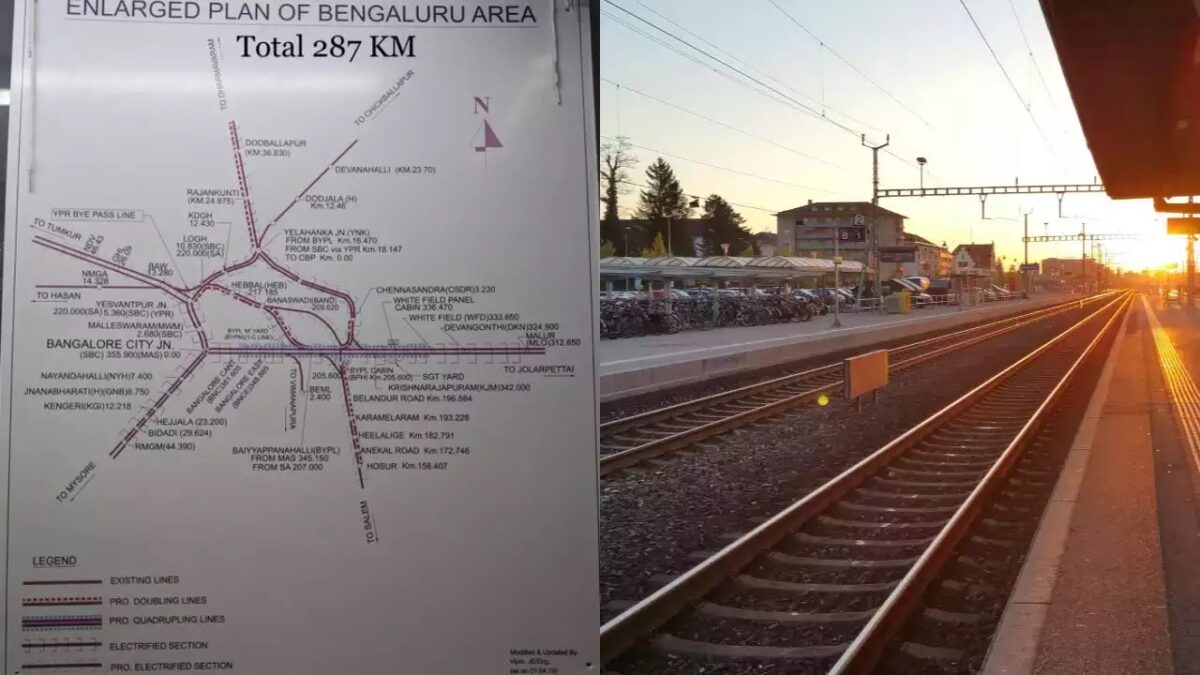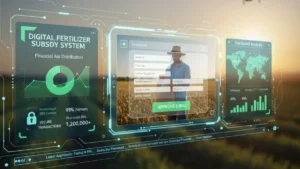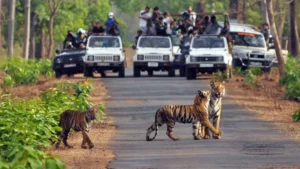Bengaluru, the bustling IT hub of India, is poised to witness a groundbreaking development in its transportation infrastructure with the announcement of a 287-km circular railway. Railway Minister Ashwini Vaishnaw disclosed this ambitious project during a press conference after a comprehensive review of railway projects in Bengaluru.
Vision for the Future: Complete Connectivity Over Seven Paths
The circular railway seeks to link key towns around Bengaluru, forming India’s most extensive network. It transcends current needs, envisioning a transportation solution for the next 40-50 years. In tandem with the Bengaluru Suburban Railway Project (BSRP), it emerges as the ultimate response to the city’s evolving transport demands.
Unprecedented Funding for Feasibility and Alignment Study
Recognizing the extensive deliberations on Bengaluru’s circular railway, Minister Ashwini Vaishnaw has approved Rs 7 crore for a feasibility and alignment study. This pivotal initiative is essential for the project’s success and meeting the city’s evolving needs. If implemented, the circular railway, exceeding Chennai’s 235.5-km network, could emerge as India’s largest suburban railway.
Potential Timeline: A Reality in the Next Five Years?
While the minister did not specify a timeline, reliable sources within the South Western Railway (SWR) suggest that the circular railway might become a reality within the next five years if everything proceeds smoothly. The envisioned circular railway is designed to follow a hub-and-spoke model, seamlessly integrating the city’s core with seven spokes located approximately 20-25 km away.
Comparing the Concept: Railways’ Version of the Peripheral Ring Road (PRR)
In essence, the circular railway can be seen as the railways’ version of the Peripheral Ring Road (PRR). Minister Vaishnaw provided insight into the proposed route, mentioning a Nidavanda-Nidavanda line via Doddaballapur, Devanahalli, Malur, Heelalige, Hejjala, and Solur. The rail-based system is envisioned to enhance public transportation, similar to successful models in other global cities like Tokyo, London, Delhi, or Bengaluru.
Feasibility Study and Future Steps
The feasibility and alignment study, set to be conducted by the SWR’s Construction Organisation, is a crucial initial step. Tenders for the study are expected to be called soon, with the report anticipated by September 2024. Subsequently, a Detailed Project Report (DPR) is likely to be initiated in 2025, potentially taking a year to complete. If all goes according to plan, construction of 80-90 km of the circular railway could be achieved annually. The railway network will consist of at least two tracks and be fully electrified.
Important Questions Related to Exams
1. How much funding has been allocated for the feasibility and alignment study of the circular railway in Bengaluru?
Answer: Rs 7 crore has been allocated for the feasibility and alignment study of Bengaluru’s circular railway.
2. What is the proposed length of Bengaluru’s circular railway?
Answer: The proposed length of Bengaluru’s circular railway is 287 km, potentially surpassing Chennai’s 235.5-km circular railway, making it one of the largest suburban railway networks in India.
3. What is the potential timeline for the realization of Bengaluru’s circular railway?
Answer: While the minister did not specify a timeline, reliable sources suggest that the circular railway might become a reality within the next five years.




 PM Inaugurates Sacred Piprahwa Relics in...
PM Inaugurates Sacred Piprahwa Relics in...
 E-Bill System Rolled Out to Improve Fert...
E-Bill System Rolled Out to Improve Fert...
 India Records Sharp Rise in Tiger Deaths...
India Records Sharp Rise in Tiger Deaths...







